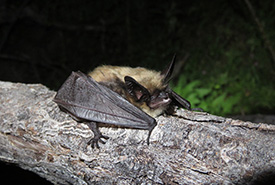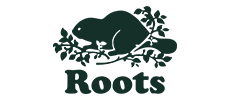Going to bat for bats

A long-eared myotis. Photo by Cory Olson.
The artificial bat roosts installed on Columbia Lake – Lot 48 have some new tenants.
Armed with cotton balls and paper bags, Canadian Rockies stewardship coordinator Haley MacDonald has been returning to the Rocky Mountain Trench property over the summer and fall to help determine what bat species have taken up residence in the roosts — by gathering their poop.
Collecting guano samples may not be the most glamourous work, but it’s one way in which the Nature Conservancy of Canada (NCC) is helping gather vital data on bat species in the Canadian Rockies.
In September 2022, Wildlife Conservation Society Canada (WCS Canada) installed three BrandenBark poles on the property to create more sorely needed bat habitat and begin to determine what species will benefit from these artificial roosts. BrandenBark mimics the bark of old-growth trees that some species of bats use for roosting.
Haley explains how the project will work:
There are 16 species of bats in BC, half of which are at risk. The biggest threat they face is habitat loss through development and industrial activity, though a deadly disease that is devastating bat populations in eastern and central North America is working its way west.
NCC has several conservation areas across BC that protect natural bat habitat, such as Chase Woods Nature Preserve on Vancouver Island and Sage and Sparrow Conservation Area in the South Okanagan. We have also supported the installation of bat roosting structures on NCC lands at Columbia Lake – Lot 48 in the Rocky Mountain Trench.
Learn more about the flying mammals and the work that NCC and our partners are doing to help bats.




